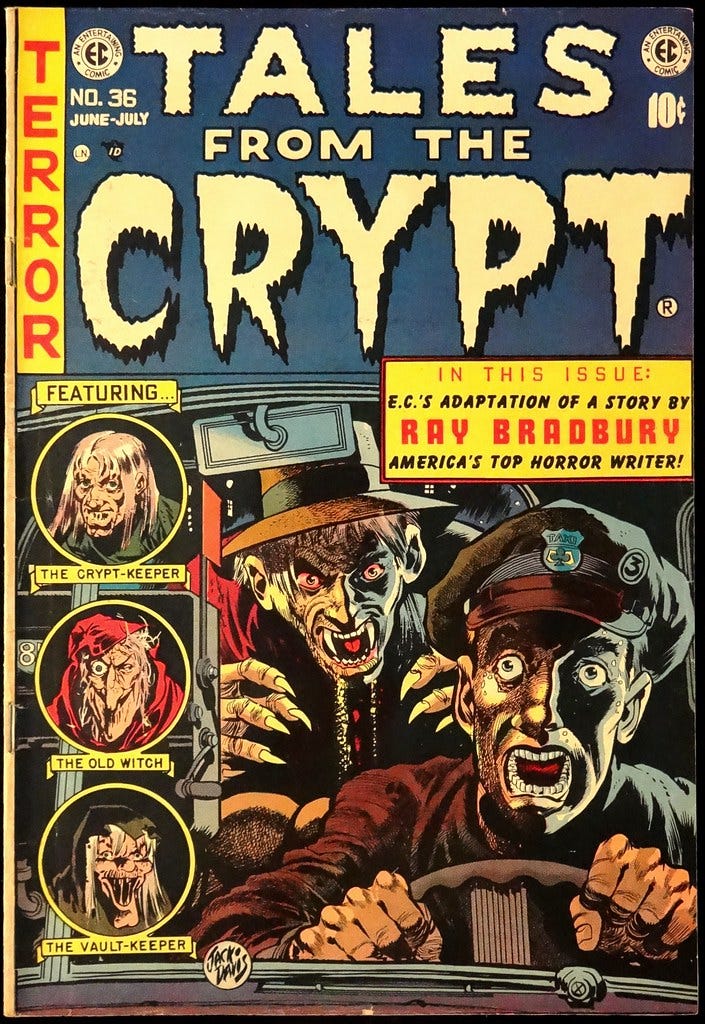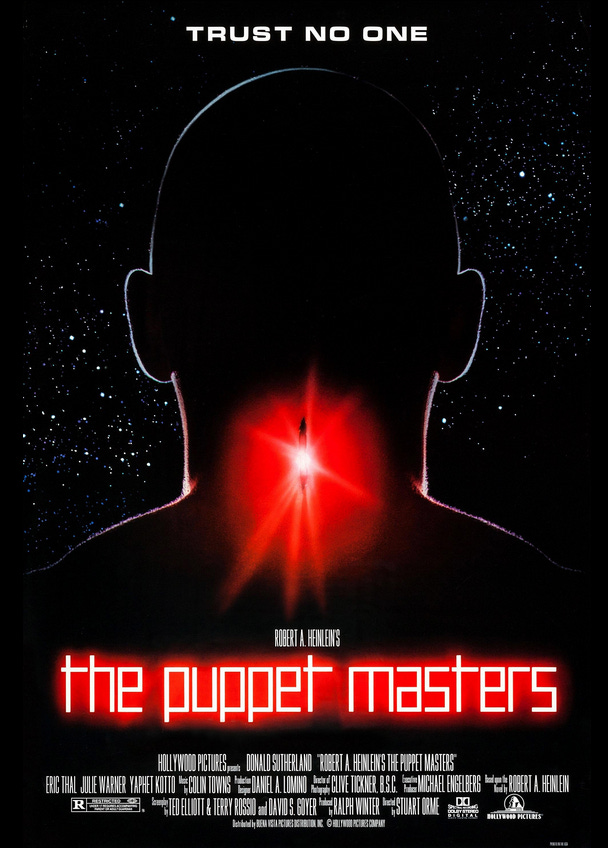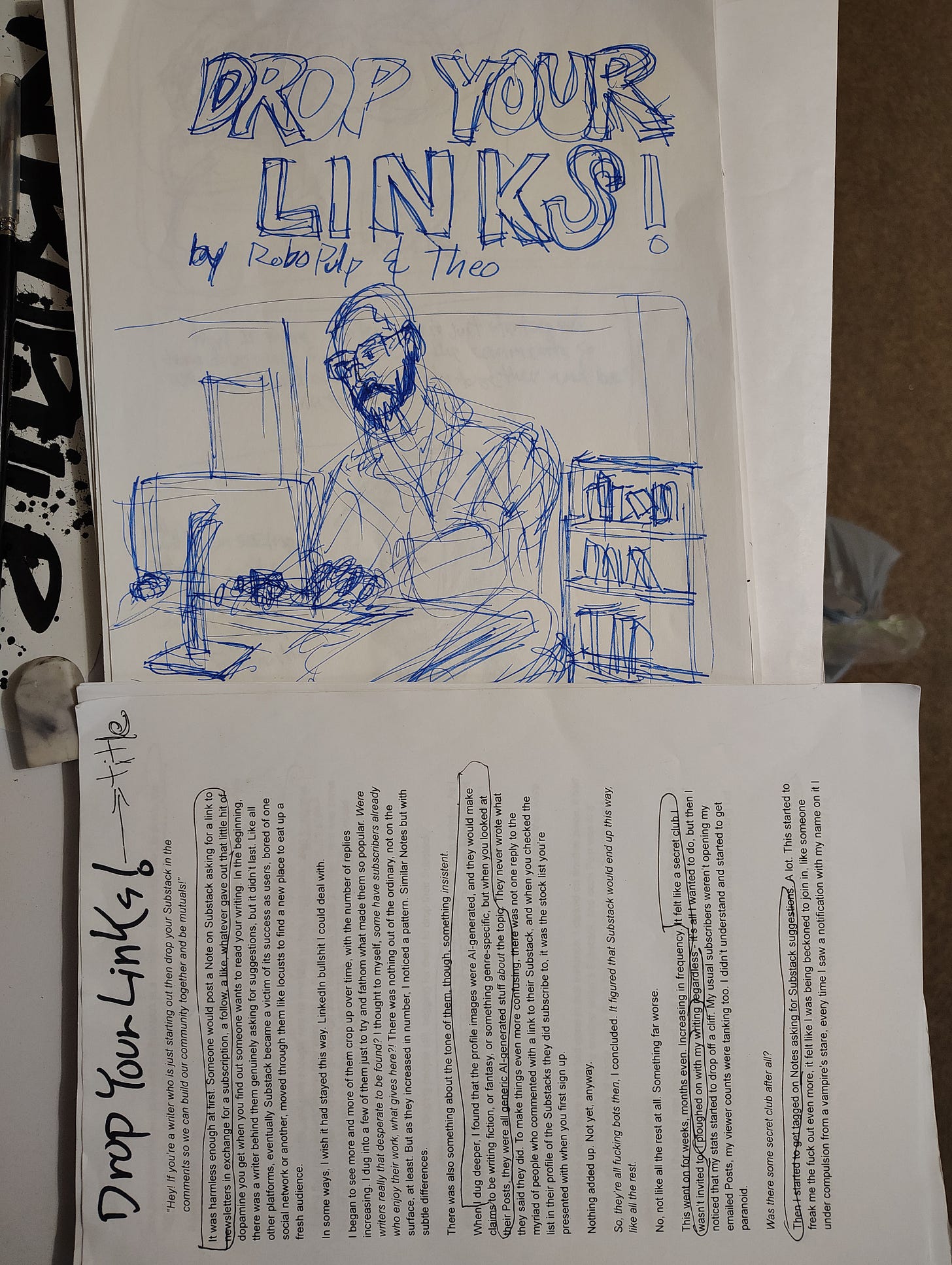In part 1 of this series and tutorials on making comics, I reduced the first part of the creative process to a series of hardline decisions.
If you’re new to
and you are the kind of creator that feels restrained by decisions intended to set limits, I might not be for you. Have you ever heard the expression “When you say yes to something you’re saying no to something else?” Likewise, when you create you’re saying yes to something in favor of something else. A creative decision is to make a choice at the exclusion of other things.I said yes to this story because of the emotions it dredged from me. I told myself “I want people to feel what this story made me feel.” And from that place I made the decision that horror would be the best vehicle to express that, and I ignored the other genres without thinking about it anymore.
As you can see the initial decisions are instinctive, from the gut. The second set of decisions are more practical. Having settled on horror I made mental bridges between the feelings the story brought out of me and the closest approximations of those feelings I had experienced in other existing media:
Invasion of the Body Snatchers; (the book written by Jack Finney, published in 1955, and the film adaptations from 1956 and 1978.)
Ray Bradbury’s short story Come Into My Cellar
The Puppet Master (novel by Robert Heinlein,published in 1951, and loosely adapted into a film in 1994.)
EC Comics. Specifically the horror comics series, from which Tales From the Crypt originate from, and which would receive a TV adaptation from 1989 to 1996.
Having reached this stage of the creative funnel, I can now go deep into the narrative. If I had decided I felt limited by the decisions I made earlier, I would be adrift in a massive ocean of creative potential, but never getting anywhere because I had not anchored myself to a particular criteria that would have had me starting something, not liking it, then scrapping it to start over again. And the situation I just described would have repeated itself. It would have repeated itself many times over, before I finally made a decision.
Making decisions is freedom. I now have an established storytelling foundation on which to proceed and explore from the rich history of horror available to me.
In part 1 I mentioned the reading process that takes me down the creative funnel. The first reading is for fun. The second reading I’m looking for the words that have "iconic” power.
A narrative has dialogue, but some dialogue is more effective in communicating ideas and emotions than other bits of dialogue. I call this kind of word depth “iconic.”
There are moments in films, novels, and comics, where a line of dialogue has the power to say a lot. It’s economical, yet broad in what it says and implies. It’s iconic. These moments in Theo’s story had that power in evoking the horror tropes I listed above, and from those feelings I made a decision that this would be horror.
Go deep on your decision. Storytelling is divided into genres. Genres can go deep or wide. If you choose to have a lot interconnecting ideas in your narrative that have a faint, shallow connection to the characters—that is, these ideas don’t affect the characters to the point of motivating them to take actions that go against their nature and take them on a journey—you’re engaging in wide storytelling. You’re really exploring ideas and making connections between them using genre as a narrative framework, more than you’re telling a story.
If you choose to keep the number of ideas limited in exchange for a closer study in how these ideas influence the characters and compel them to take actions, then you’re going deep on your storytelling. Both are valid forms of storytelling. In this case I made the decision to go deep because Theo’s story had the set-up-and-punchline quality of Tales From The Crypt, so I was going to do short and intense.
I'll go into how I used references and drew inspiration from other writers and creators to bridge the gap between the writer's ideas and my interpretations.
It'll be a free crash course in making comics shared over a few posts. Subscribe so the next post goes straight to your inbox and you receive a free comic book short in the exchange.





Nice, simple, and progressive teaching! 🧐